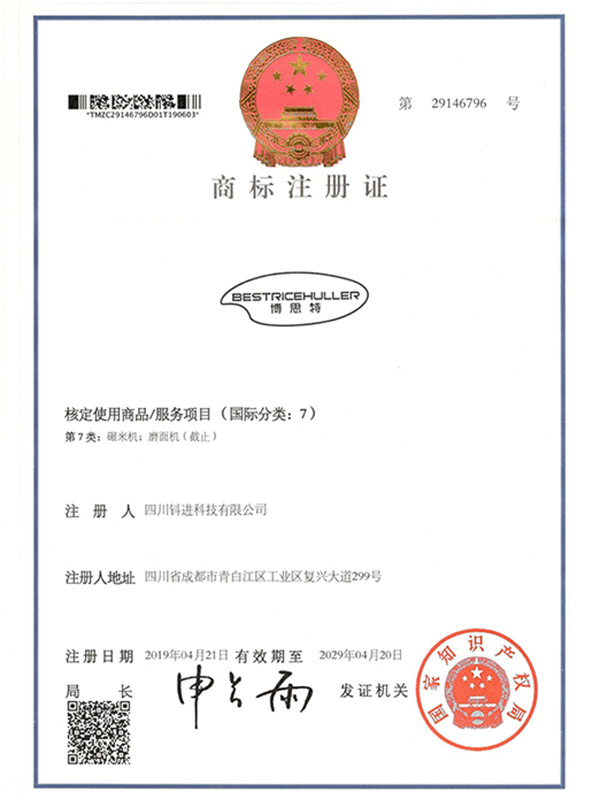Combined rice milling machine
A combined rice milling machine is an integrated rice processing unit that combines multiple stages of rice milling into a single, compact machine. The main advantage of a combined rice milling machine is that it streamlines the entire process of transforming paddy (unmilled rice) into finished white rice, making the process more efficient, space-saving, and cost-effective. Key Features of a Combined Rice Milling Machine: Multi-Functionality: A combined rice milling machine incorporates several important functions in one unit, typically including hulling, polishing, separating, and sometimes grading and sorting. These functions are usually handled by separate machines in traditional milling setups, but in a combined machine, they are integrated into one system. Simplified Workflow: Paddy goes through different stages, all managed by the combined machine. It might start with the dehusking process, where the outer husk (or shell) is removed, followed by polishing, which improves the appearance of the rice and removes some of the bran, and finishing with sorting to separate broken grains from whole grains. Space Efficiency: Since multiple stages of milling are integrated into one machine, the overall space required for rice processing is significantly reduced compared to using several separate machines for each stage. Increased Efficiency: With fewer individual machines, the overall rice milling process becomes more streamlined and requires less manpower. The combined machine often operates at a faster rate, increasing the throughput of rice processing. Energy Savings: Instead of operating several machines, a combined rice milling machine can reduce energy consumption since it integrates the different processes into one system. This is more energy-efficient than running multiple standalone machines. Key Processes in a Combined Rice Milling Machine: Cleaning: Initially, the machine may have a cleaning function that removes impurities such as dust, stones, and other foreign materials from the raw paddy. Dehusking: The first main function of the machine is to remove the husk from the paddy. This is typically done using a hulling unit or dehusker (a rotating drum or abrasive surface) that breaks the husk and separates it from the rice grain. Polishing: After hulling, the rice may still have some bran left on it. Polishing is the next step, where the rice is brushed or buffed to remove the remaining bran and improve its appearance. This step also gives the rice a shiny finish. Separation: The machine often includes a separator or grading mechanism to sort the rice according to size. This step can separate the whole grains from broken grains, which are typically lower in quality. Grading and Sorting: Some advanced combined rice mills also feature grading and sorting systems, where rice is classified based on quality, size, and appearance. Broken grains are separated from whole grains, and any further defects are identified and removed. Final Output: The output of the combined rice milling machine is white rice, ready for packaging and distribution. The machine can be adjusted to produce different grades of rice, depending on the desired quality and market demand. Types of Combined Rice Milling Machines: Small-Scale Combined Rice Milling Machines: These are compact units suitable for small mills, rural areas, or farmers who process their own rice. They typically process smaller quantities of paddy and have lower processing capacity. Large-Scale Combined Rice Milling Machines: Larger, industrial-scale versions of combined rice milling machines are used in commercial rice processing plants. These machines can process large quantities of paddy quickly and efficiently, and they may include more advanced features such as automated sorting, better energy efficiency, and higher throughput. Advantages of Combined Rice Milling Machines: Cost-Effective: By combining multiple processes into one machine, mills save on the cost of purchasing and maintaining separate machines for each milling stage. Faster Processing: The integration of processes allows for quicker processing, which increases output. Ease of Use: These machines are often designed for simplicity and can be operated by fewer people, making them suitable for small to medium-sized businesses. Compact Design: The reduced space requirement makes them ideal for smaller processing facilities, especially in regions where land and space are limited. Consistent Rice Quality: The automation and integration of different stages help ensure consistent product quality, reducing the potential for human error. Conclusion: A combined rice milling machine is a convenient, efficient, and space-saving solution for modern rice processing. It allows mills to process rice from raw paddy to polished, market-ready rice
Classification:
Detailed introduction
A combined rice milling machine is an integrated rice processing unit that combines multiple stages of rice milling into a single, compact machine. The main advantage of a combined rice milling machine is that it streamlines the entire process of transforming paddy (unmilled rice) into finished white rice, making the process more efficient, space-saving, and cost-effective.
Key Features of a Combined Rice Milling Machine:
-
Multi-Functionality:
- A combined rice milling machine incorporates several important functions in one unit, typically including hulling, polishing, separating, and sometimes grading and sorting. These functions are usually handled by separate machines in traditional milling setups, but in a combined machine, they are integrated into one system.
-
Simplified Workflow:
- Paddy goes through different stages, all managed by the combined machine. It might start with the dehusking process, where the outer husk (or shell) is removed, followed by polishing, which improves the appearance of the rice and removes some of the bran, and finishing with sorting to separate broken grains from whole grains.
-
Space Efficiency:
- Since multiple stages of milling are integrated into one machine, the overall space required for rice processing is significantly reduced compared to using several separate machines for each stage.
-
Increased Efficiency:
- With fewer individual machines, the overall rice milling process becomes more streamlined and requires less manpower. The combined machine often operates at a faster rate, increasing the throughput of rice processing.
-
Energy Savings:
- Instead of operating several machines, a combined rice milling machine can reduce energy consumption since it integrates the different processes into one system. This is more energy-efficient than running multiple standalone machines.
Key Processes in a Combined Rice Milling Machine:
-
Cleaning:
- Initially, the machine may have a cleaning function that removes impurities such as dust, stones, and other foreign materials from the raw paddy.
-
Dehusking:
- The first main function of the machine is to remove the husk from the paddy. This is typically done using a hulling unit or dehusker (a rotating drum or abrasive surface) that breaks the husk and separates it from the rice grain.
-
Polishing:
- After hulling, the rice may still have some bran left on it. Polishing is the next step, where the rice is brushed or buffed to remove the remaining bran and improve its appearance. This step also gives the rice a shiny finish.
-
Separation:
- The machine often includes a separator or grading mechanism to sort the rice according to size. This step can separate the whole grains from broken grains, which are typically lower in quality.
-
Grading and Sorting:
- Some advanced combined rice mills also feature grading and sorting systems, where rice is classified based on quality, size, and appearance. Broken grains are separated from whole grains, and any further defects are identified and removed.
-
Final Output:
- The output of the combined rice milling machine is white rice, ready for packaging and distribution. The machine can be adjusted to produce different grades of rice, depending on the desired quality and market demand.
Types of Combined Rice Milling Machines:
- Small-Scale Combined Rice Milling Machines:
- These are compact units suitable for small mills, rural areas, or farmers who process their own rice. They typically process smaller quantities of paddy and have lower processing capacity.
- Large-Scale Combined Rice Milling Machines:
- Larger, industrial-scale versions of combined rice milling machines are used in commercial rice processing plants. These machines can process large quantities of paddy quickly and efficiently, and they may include more advanced features such as automated sorting, better energy efficiency, and higher throughput.
Advantages of Combined Rice Milling Machines:
- Cost-Effective: By combining multiple processes into one machine, mills save on the cost of purchasing and maintaining separate machines for each milling stage.
- Faster Processing: The integration of processes allows for quicker processing, which increases output.
- Ease of Use: These machines are often designed for simplicity and can be operated by fewer people, making them suitable for small to medium-sized businesses.
- Compact Design: The reduced space requirement makes them ideal for smaller processing facilities, especially in regions where land and space are limited.
- Consistent Rice Quality: The automation and integration of different stages help ensure consistent product quality, reducing the potential for human error.
Conclusion:
A combined rice milling machine is a convenient, efficient, and space-saving solution for modern rice processing. It allows mills to process rice from raw paddy to polished, market-ready rice in one machine, combining various functions like dehusking, polishing, and sorting into a single, cohesive unit. Whether used in small rural mills or large industrial plants, these machines help streamline rice production and improve processing efficiency.
Previous:

 Language
Language



